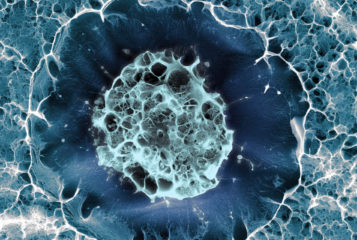The Japanese scientist whose team was responsible for the breakthrough that enabled human skin cells to be reprogrammed to behave like stem cells, Shinya Yamanaka from Kyoto University, has estimated that stem cell treatments for some diseases could be as little as a decade away.
Stem cells have the ability to turn into any of the 220 different cell types found within the body, and therefore it is hoped they will play a crucial role in treating and curing illnesses by replacing damaged cells. Yamanaka's team's work has been significant primarily because it avoids the need to use viable embryos to create stem cells, which is ethically problematic for many people.
The cells created by Mr Yamanaka's team, called induced pluripotent stem cells (iPS), take three months to create. Therefore, Mr Yamanaka has recommended that an iPS cell bank be created to shorten the time it would take to develop a tailor-made treatment. Mr Yamanaka commented 'by making such a bank, we can cut the cost of treatment and also we can shorten the period which is required for the generation of iPS cells'.
However, there are still problems with the use of iPS cells, which means that many research laboratories are still pressing ahead with embryonic stem cell (ES cell) research. Kevin Eggan, a stem cell biologist at Harvard University, has warned that because iPS cells are genetically changed they may not be safe. Therefore, until they have been deemed risk-free for clinical trials, Eggan predicts that the demand for ES cells will remain, and that they will still be a better option than the reprogrammed cells, despite the ethical objections. Richard Murphy, president of the California Institute for Regenerative Medicine, also considers ES cells to be the 'gold standard' in research.
Meanwhile, Yamanaka also reported that other laboratories in the US and Japan were now also producing iPS cells, and maintained their potential for patients awaiting treatment. 'All you need is basic technology, cell biology, you don't need special technology or equipments', said Yamanaka, who also emphasised the increasing competition in this area of research since his discovery of iPS cells last November. He estimated that while stem cell treatments might be available for some diseases within a decade, others could take considerably longer.
Sources and References
-
Stem cell treatment could work in decade: scientist
-
Scientists urge embryonic stem cell research; despite new technique creating embryonic-like stem cells
-
Japan researcher proposes stem cell bank




Leave a Reply
You must be logged in to post a comment.